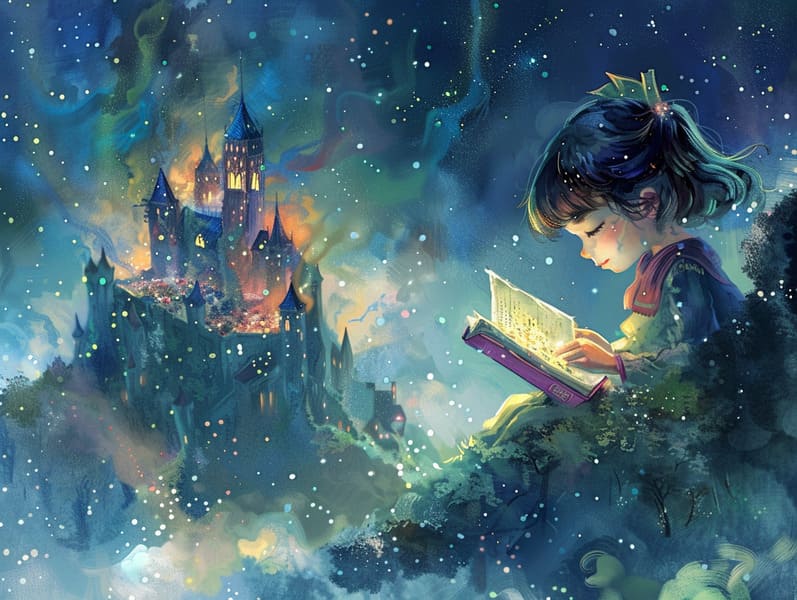The Beginning of Popular Fairy Tales and the Immortal Grandeur.
The Beginning of Popular Fairy Tales and the Immortal Grandeur.
Blog Article

Old fairy tales have deep roots. These narratives have been shared from one generation to the next centuries before they were ever put on paper. They were born from a variety of traditions, including European traditions. They were initially transmitted among mature audiences, often carrying themes and messages mirroring the societal norms and beliefs of the time.
The Brothers Grimm, Jacob and Wilhelm (the Grimm brothers), were among the first to collect and release many of these beloved fairy tales. Their anthology, "Grimm's Children's Stories," included classics like "The Little Glass Slipper," "Little Brother and Little Sister," and "The True Story of Snow White," which have since become classics in the world of children's fairy tales. Similarly, Hans Andersen's delightful narratives, such as "The Story of the Little Mermaid," and "The Duckling that Could," have enchanted hearts worldwide, ensuring their place in the pantheon of beloved fairy tales.
Though they are centuries old, fairy tales remain as meaningful as ever, especially as nighttime stories for kids. These fantastical tales are now available in different formats, including colorful picture books, magical animations, and online fairy tales.
Their lasting presence can be traced to several fascinating points:
Crucial Morals: Ancient fairy tales often share important moral lessons. Tales like "The Wolf and the Liar" teach the importance of truth, while "The Story of the Tortoise and the Hare" exemplify the traits of persistence and humility. These tales offer kids clear distinctions between moral and immoral, molding their moral compass in a tender yet deep way.
Empathy and Awareness: Timeless fairy tales frequently showcase individuals facing problems and hurdles, prompting listeners to feel with their struggles and back their triumphs. For instance, "Beauty and Her Beast" emphasizes the significance of seeing beyond looks to recognize the inner being of a soul, building awareness and discernment.
Cultural Recognition: Many fairy tales are deeply embedded in the cultural contexts from which they sprang. Exploring these tales can provide intriguing perspectives into different customs, enhancing a sense of world awareness and respect.
Creativity and Fantasy: The magical elements in classic fairy tales—talking beasts—enliven children’s imaginative ideas. These fairy tales move readers to extraordinary realms, motivating imaginative thinking and a sense of awe that stays a lifetime.
Classic fairy tales are not only whimsical but also enlightening. They provide delightful tools in promoting various mental and emotional abilities in young ones. When classic fairy tales are told out loud, they boost speaking abilities by offering new language and elaborate sentence structures. This practice also strengthens hearing perception and attention span, as children hang on every word, looking forward to see what happens next.
Furthermore, conversing about the themes and characters of fairy tales can nurture logical thinking and analytical skills. Kids are guided to discern patterns, expect results, and make sense of cause and effect. These examinations also help the young speak out their thoughts and feelings, cultivating their emotional intelligence.
In today’s technological age, the prevalence of digital fairy tales has made these narratives more acquirable than website ever. Websites and software provide extensive collections of Grimm's fairy tales that can be explored or heard anytime, anywhere. Fairy tales read aloud are particularly favored, featuring an interactive method for kids to delight in these enchanting tales. Audio stories and voiced videos take characters and settings to life, often accompanied by entrancing background sounds and soundtracks that enhance the tale-telling adventure.
The everlasting appeal of timeless fairy tales lies in their ability to change to current times while sustaining their core messages. Contemporary adaptations of these stories often highlight more representative characters and modern settings, making them relevant to today’s audience. However, the basic principles of fortitude, sympathy, and justice remain unchanged, continuing to reach readers of all ages.
Ancient fairy tales also offer a sense of familiarity and familiarity. They bequeath a structured narrative with a straightforward beginning, middle, and end, often wrapping up with the settlement of conflicts and the triumph of goodness over badness. This consistency can be reassuring for kids, offering a sense of sturdiness in an ever-changing world.
Traditional fairy tales continue to allure and teach new generations, maintaining their grace and applicability in modern society. As kids' bedtime tales, they bring a perfect blend of charm and understanding, developing moral values, empathy, and creativity. The accessibility of web-based fairy tales and the popularity of fairy tales read aloud affirm that these classic fairy tales remain acquirable to new generations.
By keeping and recounting these fairy tales, we continue to honor the rich tapestry of cultural legacy and cultural heritage. Whether you are experiencing a gorgeously illustrated book, exploring a virtual collection, or listening via an voice book, the grandeur of bedtime fairy tales is always within reach. These tales reveal of the immortal power of narratives and its ability to draw us together across time and space.
Whether you are reading a gorgeously illustrated book, viewing a web-based library, or playing an read-aloud book, the majesty of old fairy tales is always within reach.
These fairy tales reveal of the continued influence of storytelling and its ability to connect us across generations and cultures, casting a charm that delights and instructs alike.